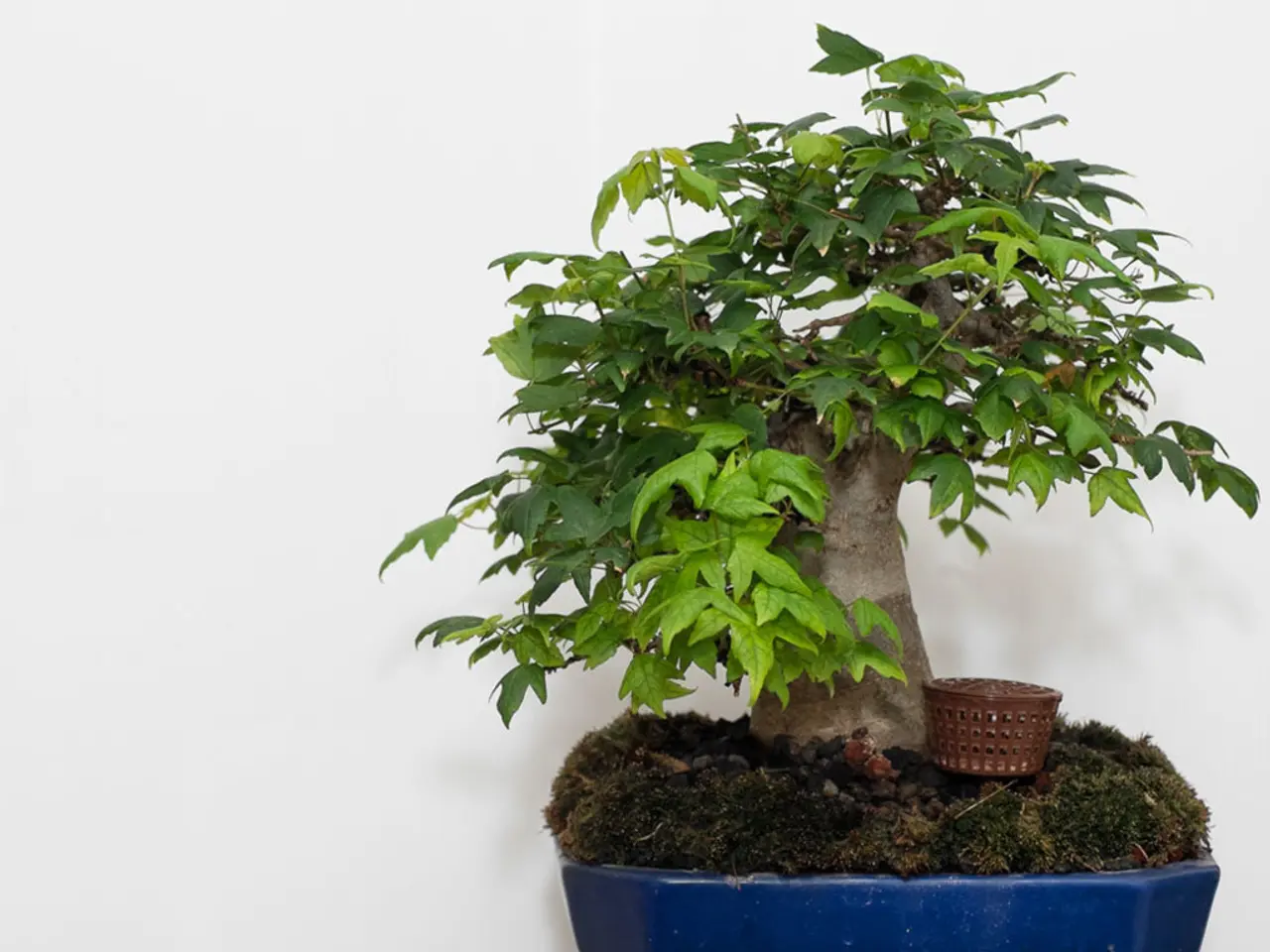Preventing Bonsai Mishaps: Steering Clear of Typical Errors
In the world of bonsai, maintaining a thriving tree requires careful attention and knowledge. Here are some common pitfalls to steer clear of to ensure your bonsai stays healthy and vibrant.
Three common pests and diseases to watch out for are spider mites, root rot, and powdery mildew. These can cause yellowing or browning leaves, leaf drop, root decay, weak growth, and structural damage if not addressed promptly.
One of the most common mistakes when caring for bonsai trees is overwatering or underwatering. Overwatering can lead to root rot due to waterlogged soil, causing the roots to become soft, mushy, and potentially fatal for the tree. On the other hand, underwatering results in dry soil, causing yellowing leaves and leaf drop as the tree becomes stressed.
Another error is using the wrong soil mix that does not drain well. This can suffocate roots and contribute to root rot. Bonsai trees require well-draining soil specifically designed for their needs to promote healthy root growth.
Poor light conditions can also cause weak growth and stress, making the tree leggy and unhealthy. Bonsai trees typically need 4-6 hours of indirect sunlight or gradual acclimation to direct sun to avoid leaf scorch.
Skipping pruning and maintenance leads to poor shape and uncontrolled growth, which diminishes the aesthetic and health of the bonsai. Pruning maintains structure and encourages healthy growth.
Incorrect wiring can damage branches if done too tightly or on old, stiff branches that break easily.
Choosing the wrong bonsai species can lead to problems when the tree's environmental needs are not met, causing stress or death.
Each of these mistakes affects bonsai health in specific ways and can reduce the tree’s vigor and lifespan if not addressed properly.
In addition, it is essential to provide a stable temperature range for bonsai trees to avoid drafts, radiators, and air conditioning vents that can disrupt the delicate balance. To promote even growth, rotate your bonsai every 1-2 weeks, gently turning the container to guarantee all sides receive equal light exposure.
Failure to monitor soil moisture can lead to overwatering, causing roots to rot, or underwatering, resulting in leaf wilt and discoloration. To avoid this mistake, weigh the specific needs of the tree and the grower's capabilities, including climate compatibility, care requirements, and growth habits.
Pests and diseases can suddenly appear in a bonsai's environment and can cause irreversible damage. Bonsai trees are susceptible to damage from temperature extremes, which can be detrimental to their health and longevity.
During repotting, bonsai enthusiasts often overlook or underestimate the potential risks, which can lead to root damage, shock, and even tree loss if not executed correctly. To avoid common repotting mistakes, it is essential to handle roots with care, choose the right potting mix, and monitor and adjust the bonsai's response to repotting.
Ideal humidity levels are pivotal for bonsai trees, but they can also be harmed by sudden changes in temperature. To safeguard your bonsai from extreme winds and storms, provide a secure, sheltered location, and consider using windbreaks, weights, or stakes to guarantee stability and protection.
Choosing the wrong species can be a critical mistake, as it can lead to unnecessary stress and compromise the tree's health. Bonsai trees thrive in temperatures between 65°F to 75°F (18°C to 24°C), with some species requiring cooler or warmer conditions.
Lastly, an insufficient pot size and shape can severely impede a bonsai tree's root growth, leading to constricted root systems, impeded nutrient absorption, and increased risk of root rot. A pot that is too small or poorly shaped can limit the soil volume available for root development, leading to stunted growth, weakened roots, and increased susceptibility to disease and pests.
By understanding and avoiding these common errors, you can ensure your bonsai tree stays healthy, thriving, and beautiful. Happy bonsaiing!
[1] Bonsai4me. (2021). Common Bonsai Tree Mistakes. Retrieved from https://www.bonsai4me.com/blog/common-bonsai-tree-mistakes/ [2] Bonsai Empire. (2021). How to Water Your Bonsai Tree. Retrieved from https://www.bonsaiempire.com/academy/how-to-water-your-bonsai-tree/ [3] Bonsai Tonight. (2021). Root Rot in Bonsai Trees. Retrieved from https://bonsaitonight.com/root-rot-in-bonsai-trees/ [4] The Bonsai Garden. (2021). Common Bonsai Tree Problems. Retrieved from https://www.thebonsaigarden.com/common-bonsai-tree-problems/ [5] Bonsai Tree Care. (2021). Bonsai Tree Care Guide. Retrieved from https://bonsaitreecare.com/bonsai-tree-care-guide/
- To maintain a thriving bonsai tree, one should avoid choosing the wrong soil mix that could suffocate roots and contribute to root rot, similar to how a poor lifestyle choice could harm overall health and wellness.
- Just as gardening in home-and-garden requires attention to detail to ensure the health of plants, bonsai enthusiasts should monitor soil moisture to avoid overwatering, leading to root rot, or underwatering, resulting in leaf wilt and discoloration.




